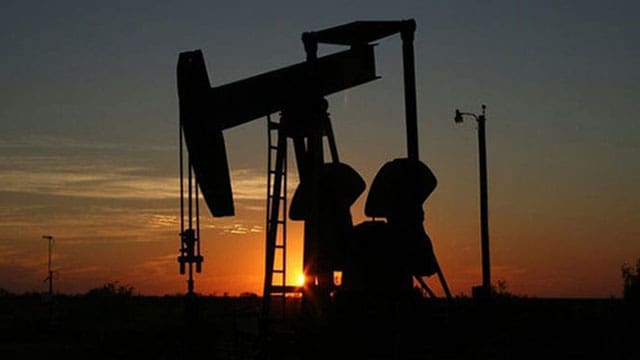Debunking the myths about the impact of fracking on GHG emissions, groundwater contamination, and earthquakes
 Environmentalists have panicked many citizens into believing fracking is dangerous by greatly exaggerating the small risks that are associated with fracking oil and natural gas wells. In reality, these risks are very low, just like those associated with other industrial activities, especially when these industrial activities are conducted competently.
Environmentalists have panicked many citizens into believing fracking is dangerous by greatly exaggerating the small risks that are associated with fracking oil and natural gas wells. In reality, these risks are very low, just like those associated with other industrial activities, especially when these industrial activities are conducted competently.
Many environmentalists falsely claim that banning fracking will reduce the production of oil and natural gas in the interests of reducing greenhouse gas (GHG) emissions into the atmosphere. If only progress on climate change were that simple.
Some environmentalists and the citizens they have successfully panicked have successfully lobbied politicians to enact fracking bans in numerous countries, including Australia, France, Germany, Spain, and the United States. The adverse impacts of such prohibitions include:
- Immediately reducing energy-industry-related economic activity.
- Not decreasing fossil fuel consumption because refiners will simply source crude oil from another supplier.
- Not decreasing GHG emissions despite claims that fracking bans will do so.
- Increasing oil and natural gas production by producers with a poorer environmental, safety, and governance (ESG) record.
- Increasing the prices of fossil fuels.
This column challenges the perceived negative effects of fracking and shows that it is a low-risk industrial activity. This sketch from the Barn Owl Trust illustrates the steps in the fracking process.

Fracking produces no GHG emissions
Some environmentalists falsely claim that GHGs are released into the atmosphere by fracking operations. No GHG emissions are produced during fracking.
| Related Stories |
| Fracking can lift the Maritimes out of economic doldrums
|
| Fracking bans not evidence based
|
| New Brunswick’s ban on fracking must be overturned
|
Fracking is an oil or natural gas well-completion process. It injects water, sand, and small volumes of a few chemicals such as salt, citric acid, benzene or lead to increase permeability in the producing formation.
Atmospheric contamination from fracking is impossible for multiple reasons:
- Fracking does not bring any fluid to the surface. Fracking is about injection.
- Once the well is in production, it will initially produce mostly the water injected during the fracking operation without any GHG emissions.
- Once oil production begins, methane, called associated natural gas, will be produced with the oil. In many cases, the natural gas is transported for sale and not released into the atmosphere. See the production topic below for details.
- On natural gas wells, the natural gas is transported for sale and not released into the atmosphere because that would be throwing away money.
Some purists point out that the pumper trucks that inject the fracking fluid burn diesel that emits CO2 into the atmosphere. That’s true, but it’s an infinitesimally tiny volume compared to the billions of truck miles driven yearly.
Fracking does not contaminate groundwater
Some environmentalists falsely claim that underground methane migration, supposedly induced by fracking, causes groundwater contamination. Such contamination is next to impossible for multiple reasons:
- The vertical distance between the surface and the horizontal length of the pipe in the sketch above is typically two to three thousand meters of impermeable rock. We know that the rock is impermeable because it has kept the oil and natural gas in its formation and not allowed it to migrate anywhere for millions of years.
- While fracking aims to create fissures in the producing formation, the pressure exerted by the frack fluid is insufficient to crack thousands of meters of impermeable rock into the groundwater formation near the surface.
- Surface casing is cemented to prevent the drilling and production operations from contaminating the groundwater. The vertical length of the pipe shown in the sketch above is the surface casing. Surface casing length typically varies from 300 to 900 meters.
You can read supporting analysis for these points in the EPA’s Study of Hydraulic Fracturing and Its Potential Impact on Drinking Water Resources. It’s worth noting that in extraordinarily rare cases, some groundwater contamination has occurred due to the incompetent cementing of the casing.
The widely publicized Gasland video shows a homeowner using a match to light the water coming from a kitchen faucet on fire. The narrator then claims that fracking in the neighbourhood caused methane to be introduced into the water well. This claim is false. In the video, no one ever asks if the flame was also present in the weeks, months, or even years before fracking operations commenced in the neighbourhood.
The truth is that methane has been present since the water well was constructed years before fracking started. The methane comes from narrow, non-commercial coal seams in the surface sediment layers near where the water well was completed, typically 50 to 100 meters deep. When the kitchen faucet is opened, the water flowing from the faucet contains small amounts of methane. There is no smell. The smell we associate with methane is a chemical introduced into natural gas by the distribution utility as a safety measure to warn us of a potentially explosive leak.
Fracking does not cause perceptible earthquakes
Some environmentalists falsely claim that fracking causes dangerous earthquakes. Fracking can trigger small, barely perceptible earthquakes near the well. Barely noticeable earthquakes are those that measure under 3.0 on the Richter scale. These small earthquakes also occur frequently, naturally, all over the earth and cause no damage.
After fracking operations became widespread in Oklahoma, the frequency of light to moderate earthquakes increased. However, an investigation by regulators determined that these earthquakes were caused by wastewater injection and not by fracking.
Fracking wastewater does not contaminate groundwater
Some environmentalists falsely claim that fracking wastewater contaminates groundwater resources that homeowners, industry, and agriculture use. Fracking does create wastewater volumes. However, as the sketch above shows, these volumes are trucked to a wastewater disposal facility. At the wastewater disposal facility, the wastewater from fracking is injected deep underground into a formation that can hold the water. Fracking wastewater is not dumped into rivers and streams.
Conclusion
Claiming that fracking causes environmental impacts is without factual foundation.
Canadian oil and natural gas are produced to the highest ESG standards in the world. Therefore, Canada has among the lowest methane and CO2 emissions rates from oil and natural gas production compared to other producing countries. Canada’s oil and gas production is ranked about fifth globally, while our CO2 emissions are ranked 22nd.
Yogi Schulz has over 40 years of information technology experience in various industries. Yogi works extensively in the petroleum industry. He manages projects that arise from changes in business requirements, the need to leverage technology opportunities, and mergers. His specialties include IT strategy, web strategy and project management.
For interview requests, click here.
The opinions expressed by our columnists and contributors are theirs alone and do not inherently or expressly reflect the views of our publication.
© Troy Media
Troy Media is an editorial content provider to media outlets and its own hosted community news outlets across Canada.

